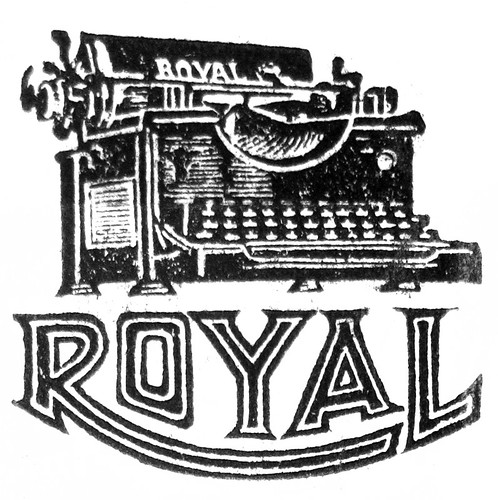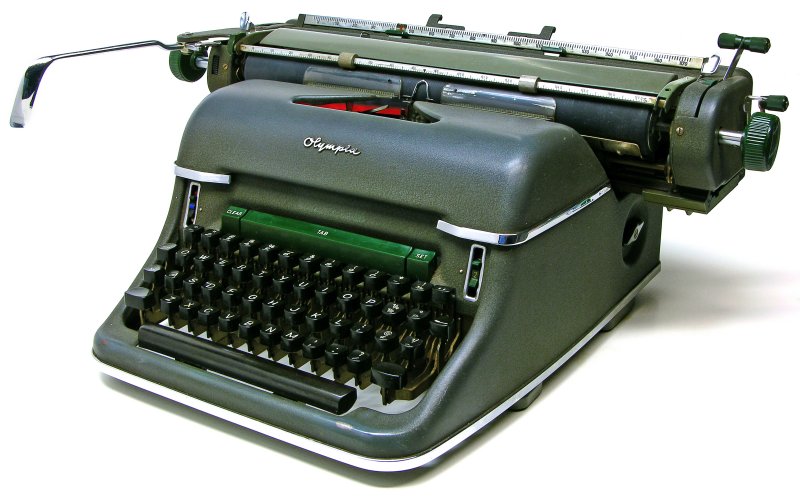- beak
- Key Master
 Offline
Offline 
- From: Qld Australia
- Registered: 24-3-2013
- Posts: 929
Does carbon paper deteriorate with age?
Just recieved a packet of carbon included with the latest horse in my stables. From the graphics ('Polyfax') it looks 1940s or thereabouts. The stuff is fresh looking, but leaves only a light grey impression. Was this a special sort of carbon, or has it just 'gone off' over the years? You'd think that carbon would just sit there forever, inert and waiting to be used, but maybe not?
Sincerely,
beak.
- TypewriterGuy
- Typewriter Talk Vet
 Offline
Offline 
- From: United States
- Registered: 24-4-2015
- Posts: 1,250
Re: Does carbon paper deteriorate with age?
I woud think it doesnt degrade, mostley because I have heard of lots of people recieveing a typewriter with antique carbon paper as a present and not complaining.
Actually, it might be because there may be a thin coating of carbon that has fallen off and created a layer. Try putting it in front of a fan?
Back from a long break.
Starting fresh with my favorite typer. A Royal Futura!
- malole
- Inactive Account
 Offline
Offline 
- From: East Anglia, UK
- Registered: 02-6-2014
- Posts: 330
Re: Does carbon paper deteriorate with age?
My packs of old carbon paper are great, in fact like new, so not sure what might have happened to yours. Maybe it depends on storage conditions?
- Uwe
- Moderator
 Offline
Offline 
- From: Toronto, Canada
- Registered: 12-3-2013
- Posts: 4,410
Re: Does carbon paper deteriorate with age?
malole wrote:
Maybe it depends on storage conditions?
I can see that. Carbon paper is a mix of wax and ink pigment, so maybe exposure to heat or moisture can affect its performance? Maybe you could post a few images of its packaging beak? If I ever came across the same product locally I would buy it for comparison.
The pronoun I has always been capitalized in the English language for more than 700 years.
- TypewriterGuy
- Typewriter Talk Vet
 Offline
Offline 
- From: United States
- Registered: 24-4-2015
- Posts: 1,250
Re: Does carbon paper deteriorate with age?
@Uwe If theres wax, could it be that it was stored somewhere really hot, and the wax melted, creating a layer of it on the top of it?
Back from a long break.
Starting fresh with my favorite typer. A Royal Futura!
- Gabby Johnson
- Platen Punisher
 Offline
Offline - Registered: 21-2-2015
- Posts: 77
Re: Does carbon paper deteriorate with age?
Just a guess here, but if it is from the 1940s the materials used in manufacturing may have been reformulated to meet wartime rationing and the resulting carbon paper being not as long-lived as normal.
I just picked up a box of Carter's Copy Film that looks to be from the 1980s and it works fine.
- Ektagraphic
- Touch Typist
 Offline
Offline 
- From: Mass.
- Registered: 05-10-2014
- Posts: 146
Re: Does carbon paper deteriorate with age?
In my experience, old carbon paper still works well...although the stuff I have used was probably not as old as the '40s...
- Ardie
- New Member
 Offline
Offline - Registered: 08-4-2018
- Posts: 13
Re: Does carbon paper deteriorate with age?
I have some carbon paper that's been around in my stationery stuff since the middle 1960's.
After this intriguing message thread, I pulled out a sheet and did a bit of typing.
Then I pulled out a sheet of carbon paper that I picked from the Staples store about 2 months ago and did a bit more typing.
The 1960's carbon impressions were clear (as a carbon copy can be), but there *is* a slight difference from the 2018 carbon copy.
I attribute the difference to the variation in carbon paper formulation changes over 50 years rather than the actual age of the carbon paper.
Ordinary typing paper, when kept tucked away for half a century, can look as fresh as a daisy.
So its no stretch to think that carbon paper can remain fresh as a daisy for a similar period of time.
Unfortunately for me, my Smith-Corona Skyriter isn't too happy with anything more than 1 sheet, 1 carbon, and 1 sheet. So to make multiple copies, I have to use my printer/copier to make color copies of the carbons :-(
-- Ardie
- M. Höhne
- Key Master
 Offline
Offline - From: Maine
- Registered: 14-3-2013
- Posts: 646
Re: Does carbon paper deteriorate with age?
Ardie wrote:
I have some carbon paper that's been around in my stationery stuff since the middle 1960's.
After this intriguing message thread, I pulled out a sheet and did a bit of typing.
Then I pulled out a sheet of carbon paper that I picked from the Staples store about 2 months ago and did a bit more typing.
The 1960's carbon impressions were clear (as a carbon copy can be), but there *is* a slight difference from the 2018 carbon copy.
I attribute the difference to the variation in carbon paper formulation changes over 50 years rather than the actual age of the carbon paper.
Ordinary typing paper, when kept tucked away for half a century, can look as fresh as a daisy.
So its no stretch to think that carbon paper can remain fresh as a daisy for a similar period of time.
Unfortunately for me, my Smith-Corona Skyriter isn't too happy with anything more than 1 sheet, 1 carbon, and 1 sheet. So to make multiple copies, I have to use my printer/copier to make color copies of the carbons :-(
-- Ardie
There are several hidden assumptions in this post. Let's consider things more fully:
<"The 1960's carbon impressions were clear (as a carbon copy can be), but there *is* a slight difference from the 2018 carbon copy. ">
What is that difference? Is the impression from the newer cp sharper or fuzzier?
<"I attribute the difference to the variation in carbon paper formulation changes over 50 years rather than the actual age of the carbon paper.">
In addition to the different ages, there is the potentially huge difference in the manufacturing process: different companies using different chemicals and possibly different philosophies in what carbon paper should be, e.g., more attention paid to keeping fingers clean leading to different formulas which might have a side effect of sharper impression. And I'll bet that the older cp was made in the US and the newer one in Asia, with their different traditions. The "variation in carbon paper formulation" might just as well be due to different manufacturers as to developments over time.
<"Ordinary typing paper, when kept tucked away for half a century, can look as fresh as a daisy.
So its [sic] no stretch to think that carbon paper can remain fresh as a daisy for a similar period of time.">
The two kinds of "paper" are completely different materials and compositions. I think it is a stretch to expect that they would age the same. Typing and writing papers are designed for (among other things) longevity and resistance to fading and discoloration, while carbon papers were expected to be used up within a few weeks or months and were disposable. Cp is not coated with ink that could dry out but they are coated with carbon that rubs off with handling or even being jostled in the box for decades.
Whadya think?

 1 of 1
1 of 1